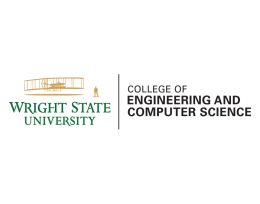 Wright State University’s College of Engineering and Computer Science will investigate how to improve the performance of advanced aircraft through a one-year $896,000 grant from the Ohio Department of Higher Education.
Wright State University’s College of Engineering and Computer Science will investigate how to improve the performance of advanced aircraft through a one-year $896,000 grant from the Ohio Department of Higher Education.
The funding supports, and has the potential to expand, Wright State’s research on advanced air mobility.
Advanced air mobility uses new technology to move people and cargo between places not conveniently served by surface transportation or existing aviation. It involves small electric vehicles that can take off and land vertically.
Advanced air mobility is a multidisciplinary endeavor involving aerospace, mechanical, electrical and industrial engineering, which are offered in Wright State’s College of Engineering and Computer Science.
Darryl Ahner, Ph.D., dean of the College of Engineering and Computer Science, described advanced air mobility as electric flying taxis that can transport people around crowded areas and evacuate victims in emergencies. The vehicles must be operated by a pilot but eventually may fly autonomously.
“Advanced air mobility has a potential to have huge impacts on the way we move people whether in a routine travel capacity or an emergency situation,” he said.
Wright State’s project is a faculty-led student-driven research effort involving 13 faculty members and numerous graduate research assistants at Wright State as well as Sinclair Community College’s unmanned aerial systems and digital engineering programs.
The project is focused on enhanced power management and advancement of the operational performance of the vehicles.
The first area of focus will examine how to effectively charge the batteries that will power the vehicles, including designing a smart wireless power-transferring network that can charge multiple mobile devices and systems. The researchers will use digital engineering to design, build and test the batteries.
The other phase of the project seeks to enhance the performance capabilities of advanced air mobility vehicles. Wright State researchers will use artificial intelligence and sophisticated algorithms to improve route planning and sensors to improve how the vehicle moves or flies.
“How can we have them efficiently operate? How we can enhance the safety, manage the power, route them for a safe, effective route as they’re flying?” Ahner said.
The College of Engineering and Computer Science hopes its award from the State of Ohio will kickstart opportunities to expand its research on advanced air mobility and prepare students for careers in the emerging field.
The timing is right to take the expertise among the college’s faculty and students and focus it on innovating research, Ahner said.
Through its Agility Prime initiative, the Air Force Research Laboratory is working with higher education institutions and industry to develop commercial electric vertical takeoff and landing aircraft.
Located at the Springfield-Beckley Municipal Airport, the National Advanced Air Mobility Center of Excellence is a collaborative research facility of the Air Force Research Laboratory, NASA and the Ohio Unmanned Aircraft Systems Center.
Joby Aviation, a California-based company developing electric air taxis for commercial passenger service, plans to build a manufacturing facility at the Dayton International Airport.

 Milling around
Milling around  Wright State recognizes Nursing Professor Kim Ringo for advancing international student success
Wright State recognizes Nursing Professor Kim Ringo for advancing international student success  Wright State honors graduating students for distinguished doctoral dissertations
Wright State honors graduating students for distinguished doctoral dissertations  Top 10 Newsroom videos of 2025
Top 10 Newsroom videos of 2025  Museum-quality replica of historic Hawthorn Hill donated to Wright State
Museum-quality replica of historic Hawthorn Hill donated to Wright State 